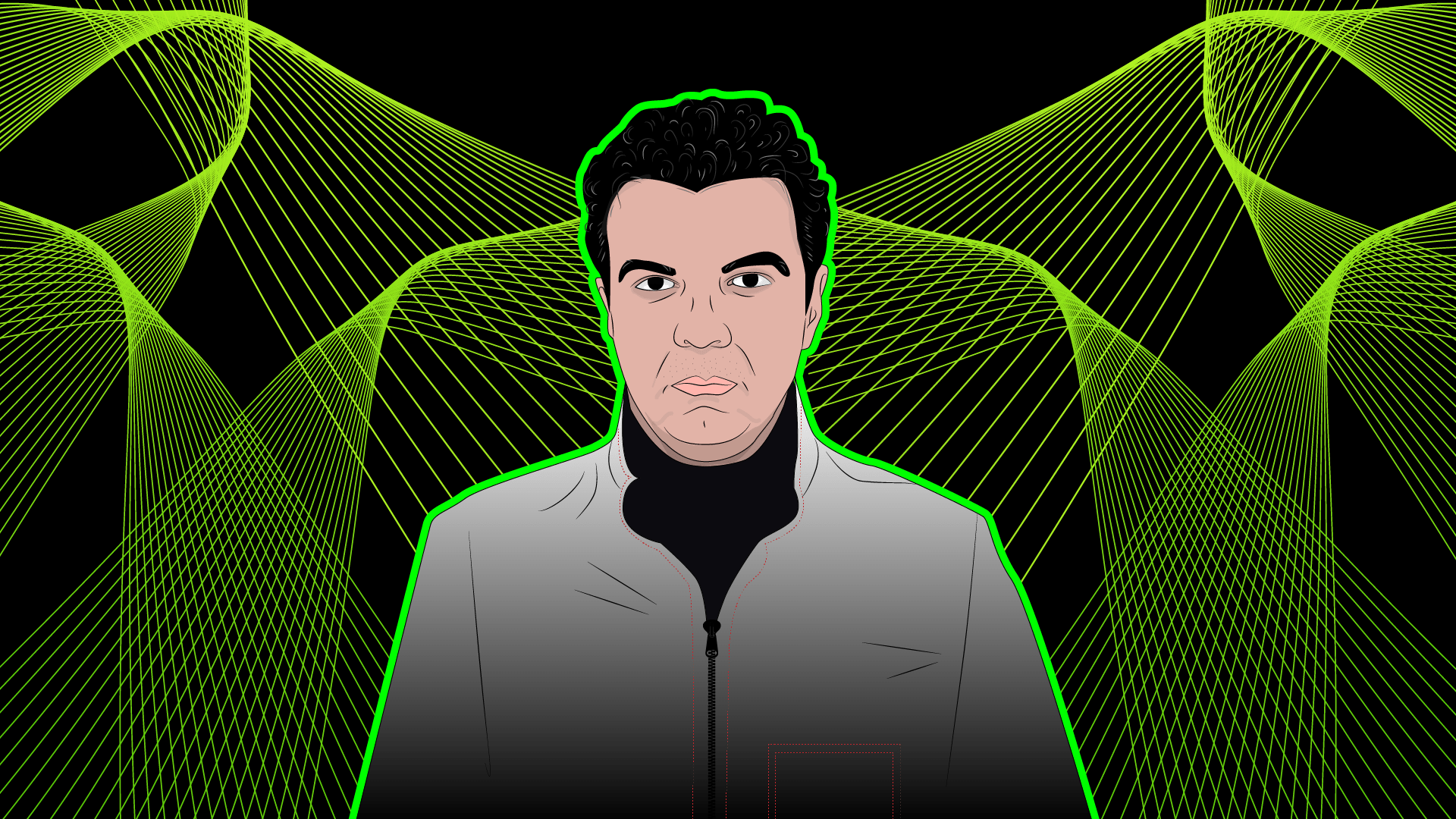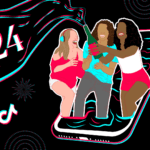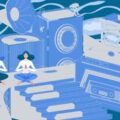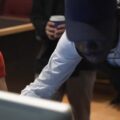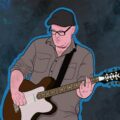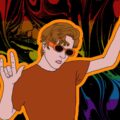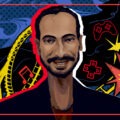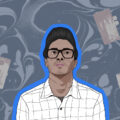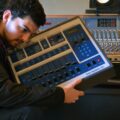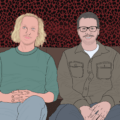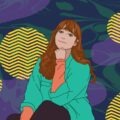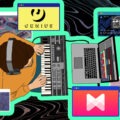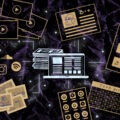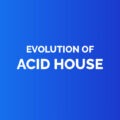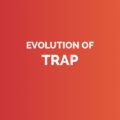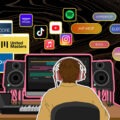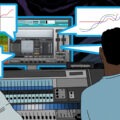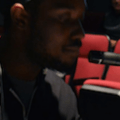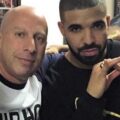
After a first interview with RAC in November 2022 for his v H+ & M P project, we wanted to learn more about the multiple artistic projects of the man who organizes Friday jams at the Montreal campus, the instructor who urges students to get out of their comfort zone, encouraging them to shed the shackles of the so-called traditional music world. Max Pazhutan shares his vision of sonic expression.
RAC: In the first part of our interview with you and Honey about your v H+ & M P project, you mentioned that, as composers and musicians, there’s a before and an after to becoming a sound engineer. Can you tell us more about this important moment in an artist’s life?
Max: Just as Bach’s technical comprehension of musical instruments and composition elevated his works to unparalleled heights, as well as Iannis Xenakis’s mathematical and architectural approach to music composition revolutionized the sonic landscape, a composer greatly benefits from knowing sound engineering. It allows them to better communicate their creative vision and to convey their intentions more effectively to the engineers. Historically, advancements in music technology have been driven by the artistic needs and aspirations of great composers. This collaboration continues to shape the landscape of music production in the modern era.
RAC: Can you share your journey into the world of music? How did it all begin for you in Iran?
Max: From the early stages of my childhood, I was immersed in a wide spectrum of musical genres thanks to the eclectic tastes of my older siblings. My sister’s predilection for classical compositions, my brother’s affinity for progressive rock, and my other sister’s expansive palate, encompassing movie soundtracks, electronic landscapes, synth-pop, and various ethnic inflections, collectively served as a true crucible of musical diversity. In the years after the clerics revolution, the musical situation of my homeland became far from conducive to artistic pursuits. Music languished on the periphery of government considerations, presenting a challenging backdrop for aspiring musicians. Faced with this austere reality, I embarked on a relentless journey of autodidacticism. This self-propelled odyssey culminated in a significant juncture, as I found myself invited to teach at Tehran Conservatory.
In the mid 90s, I started to create and perform my own version of Techno music under the moniker Acidmeg. With my synthesizer, and a magnetic tape recorder, I started to record my compositions in my room. Motivated by performing at the clandestine parties, and people’s reactions I created more Acidmeg tracks and later initiated another project named “Liqui Syn Dementia“. I always liked the freedom that using monikers gives artists.
In 2002, I realized that I could create my own plugins if I acquired the skills to code. After several years, I could finally unveil MP1, a self-crafted soft-synth. Simultaneously, I encountered a burgeoning discipline within electronic music: live coding. This innovative approach involved musicians taking the stage armed with a computer, writing lines of code that instantaneously translated into sonic expressions. Since then, computer coding is an integral facet of my projects, not to mention that it became a focal point of M P | v H+.
In 2005, I started to create sound installation art, seeking to create immersive sonic experiences that transcended conventional boundaries. The transition represented a pivotal juncture in my artistic trajectory.
RAC: In the audio world, what positions or roles have you held?
Max: First and foremost, I think of myself as a composer. Since 1991, I have dedicated my life to creating electronic and digital compositions that explore the boundless possibilities of sound. This role is not just a profession; it’s a passion that has driven my creative endeavors for over three decades. In addition to composing, I am a sound designer. Whether it’s for art galleries or multimedia projects, sound design allows me to contribute a unique auditory dimension to various spaces and experiences.that transcends traditional musical boundaries.
Teaching is another significant aspect of my life. Back in Iran, I recognized the limitations of the local universities in imparting comprehensive knowledge of contemporary music. I have always been determined to bridge this gap. Now, as an instructor and lecturer for over twenty years, I have had the privilege of sharing my knowledge and insights into music and audio arts. Over the years, I took it upon myself to design a series of online courses under the umbrella of “Pazhutan Ateliers“, tailored for enthusiasts of electronic and computer music. Aside from being an instrumentalist, I am practicing to be an author: I believe in the power of words to complement the language of music. Lastly, whether it’s through my company or collaborations, I am proud to be an active participant in the music technology industry, art creation, scientific research, and expressive output. This multifaceted involvement enables me to stay at the forefront of technological advancements and incorporate them into my creative process.
RAC: Every student at RAC knows that you are a fan of metal. How did metal come to you?
Max: When Metallica released Kill’em All I was 9 years old and I liked loud music and high spirits. One of the most profound chapters in my musical odyssey has been the exploration of metal. Though I was exposed to music such as Thin Lizzy, Uriah Heep, and Jeff Beck as a kid, it was Kiss, their looks, and their loudness that captured my attention. Especially when I saw their photo on the back of a Marvel Comics comic book of Ghostrider.
Metal, but more especially death Metal music, has played a crucial role in my personal journey. I’ve come to appreciate metal not just as a genre of music but as a transformative force. The raw and cathartic energy provides an outlet for emotions, turning negativity into a force for resilience. Metal, to me, feels like an evolution of the blues, each riff and beat carrying the soulful echoes of its roots. It’s a genre that doesn’t just rely on musical prowess: it’s a cultural phenomenon that draws from technology, philosophy, literature, and the sheer energy of musical performance. In the contemporary landscape, metal has evolved to become almost mathematical, with complex time signatures, structures, and a fusion of genres, showcasing its adaptability and constant quest for innovation. It is not confined to a singular narrative; rather, it is a dynamic and multifaceted genre that mirrors the complexities of the human experience.
RAC: What does musical composition mean to you? How do you apply this vision?
Max: Architecture, in analogy with music composition, serves as a compelling lens through which to view the construction of sonic landscapes unfolding over time. Embracing a mindset rooted in contemporary architectural philosophy, I find inspiration in the innovative principles of form, structure, and spatial design. This approach extends beyond traditional musical notation, exploring the vast potential of sound as raw material. Much like the architect considers materials and “space”, composers now navigate a sonic palette, crafting auditory environments in “time”. The fusion of this architectural mindset with the mathematical possibilities afforded by computer science results in a dynamic synergy, opening doors to unprecedented musical compositions. Composers need to explore intricate patterns, manipulate timbre, and experiment with the very fabric of sound.
RAC: What is your advice to RAC students regarding creation, composition and the philosophy of an artist?
Max: I ask my students to embrace the convergence of math, geometry, and music. These disciplines are not mutually exclusive but intertwined, offering you a unique language to articulate your creative ideas. Computer coding, especially with open-source languages like SuperCollider and Pure Data, is a powerful tool that can unlock limitless sonic possibilities. I suggest to listen, study, perform, and approach each composition with an open mind and a commitment to learning. It is important to resist the urge to judge; instead, observe artists to understand the motivations, techniques, and underlying concepts that drive each piece.
Improvisation embraces spontaneous creation and encourages flexibility, allowing the music to flow from a place of authenticity. It’s a transformative power that bridges the classical and contemporary realms. Ultimately, your journey in composition is a personal exploration, remember that your unique voice adds to the rich tapestry of musical expression.
RAC: Do you have any plans for 2024?
Max: One of the highlights of the year is a monumental live audiovisual (AV) performance that will unfold at MUTEK – an event that’s not just a performance, but also a journey into the unexplored realms of sound and vision. The AV performance aims not only to entertain, but to transport the audience into a realm where music and visuals interlace seamlessly, pushing the boundaries of perception.
I’m diving deeper into computational techniques, exploring the latest advancements in live coding, and harnessing the power of emerging technologies to craft innovative sonic experiences. Always developing some content for my workshops, masterclasses, and online resources, I’m also exploring cross-disciplinary collaborations, joining forces with artists, technologists, and creators from diverse fields. The aim is to create something beyond the conventional – an immersive fusion of art and technology that resonates across disciplines.
Written by Caroline Boivin
Illustration by Holly Li
